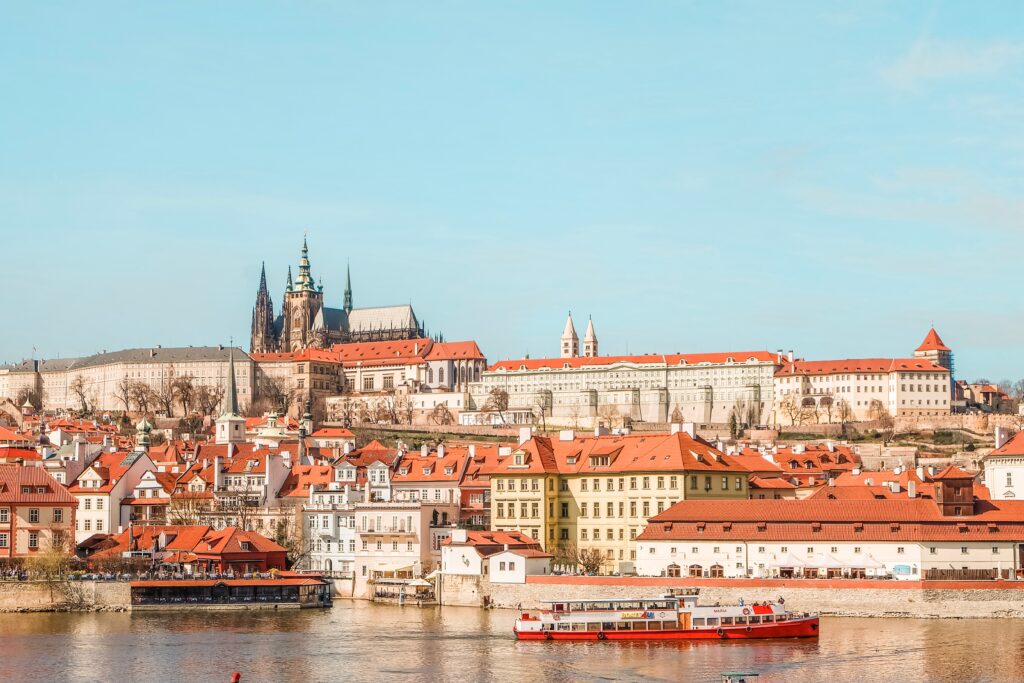Table of Contents
TogglePrague
Introduction
Visiting Prague is an unforgettable experience that should be on every traveler’s bucket list. The Czech Republic is a charming city rich in history, culture, and architecture. From the Gothic spires of St. Vitus Cathedral to the bustling energy of Old Town Square, Prague is a city that will capture your heart and imagination.
One of the most fascinating aspects is its history. The city has been the site of many significant events, from the birth of the Czech Republic to the Velvet Revolution. The city’s architecture reflects this rich history, with buildings spanning centuries and styles. The city has something to offer if you’re interested in Gothic, Baroque, or Art Nouveau architecture. As you explore the city, you’ll discover hidden gems around every corner, from quaint cafes to picturesque gardens.
Overall, Prague is a city that will enchant you with its beauty, history, and culture. Whether you’re interested in sightseeing, shopping, or nightlife, there’s something for everyone in this vibrant city. So pack your bags and prepare for an adventure you’ll always remember.
Key Takeaways
- A city with a rich history and diverse architecture.
- The city offers a variety of activities, from sightseeing to nightlife.
- A must-visit destination for any traveler.
History of Prague
Prague has a rich history that spans over a thousand years. The city has been inhabited since prehistoric times, and archaeological excavations have revealed evidence of human habitation in the area as far back as the Paleolithic era, around 500,000 years ago. In the Neolithic period, around 4,500 BCE, the first permanent settlements were established in the area.
Ancient History
It’s ancient history is closely tied to the Celts, who settled in the area in the 4th century BCE. The Celtic settlement was later conquered by the Germanic Marcomanni tribe, who established a fortress on the site of the present-day Prague Castle. In the 6th century, the Slavs arrived and established a settlement on the opposite bank of the Vltava River.
In the 9th century, the first Bohemian ruler, Borivoj I, established a fortified settlement on the hill of Vysehrad. This settlement became the seat of the Bohemian princes and later the kings of Bohemia. In the 10th century, the Přemyslid dynasty took control of Prague and established it as the capital of the Bohemian Kingdom.
Modern History
In the 14th century, Prague experienced a period of great prosperity and growth. The city became a center of trade and commerce, and its population grew. Many of Prague’s most famous landmarks, including the Charles Bridge and the Old Town Square, were built during this time.
In the 15th century, Prague became the center of the Hussite movement. This religious reform movement challenged the authority of the Catholic Church. The Hussite Wars lasted from 1419 to 1434 and were fought in and around Prague and significantly impacted the city’s history.
In the 16th century, the city became a center of the Renaissance, and many of its buildings were renovated in the Renaissance style. During the Thirty Years’ War, which lasted from 1618 to 1648, Prague was occupied by foreign armies and suffered significant damage.
In the 19th century, Prague became a center of Czech nationalism, and the city played an essential role in creating the independent Czechoslovak state in 1918. During World War II, it was occupied by Nazi Germany, and many of its Jewish residents were deported to concentration camps.
Today, Prague is a vibrant and cosmopolitan city that attracts millions of yearly visitors. Its rich history is evident in its architecture, museums, and cultural institutions, and the city continues to play an essential role in the cultural and political life of the Czech Republic.
Getting to Prague
If you’re planning a trip to Prague, there are several ways to get there. Here are the most common options:
By Air
Prague has a well-connected airport – Václav Havel Airport Prague (PRG) – the largest airport in the Czech Republic. It is approximately 9 miles (15 km) from the city center. The airport operates flights to and from central European, North American, and Asia cities.
Several airlines offer direct flights to Prague from major cities in the US, such as New York, Chicago, and Los Angeles. The flight time from New York to Prague is approximately 9 hours.
Once you arrive at the airport, you can take a taxi, bus, or train to the city center. The journey takes around 30 minutes by taxi or bus and about 45 minutes by train.
By Train
Prague is well-connected to several European cities by train. The city’s central train station is Praha hlavní nádraží, which is located in the city center. There are direct trains to Prague from major cities in Germany, Austria, Poland, and Hungary.
If traveling from other parts of Europe, you may need to change trains at a central hub such as Berlin, Vienna, or Budapest. The journey time varies depending on your starting point, but it usually takes 4-5 hours from Berlin to Vienna.
By Bus
If you’re on a budget, taking a bus to Prague may be a good option. Several bus companies offer direct buses to the city from major European cities, such as Berlin, Vienna, and Budapest.
The journey time varies depending on your starting point, but it usually takes 4-5 hours from Berlin to Vienna. The buses arrive at the central bus station in Prague, near the city center.
Overall, there are several ways to get to Prague, and each option has advantages and disadvantages. Choose the one that suits your budget, schedule, and travel preferences.
Accommodation in Prague
Regarding accommodation in Prague, there are plenty of options to choose from. Whether you are looking for luxury hotels, budget hotels, or hostels, you will find something that suits your needs.
Luxury Hotels
Prague has some of the best luxury hotels in Europe many historic buildings with stunning architecture. These hotels offer top-notch amenities, including spas, fine-dining restaurants, and fitness centers.
Some of the best luxury hotels in Prague include:
- Four Seasons Hotel Prague
- Mandarin Oriental, Prague
- The Augustine, a Luxury Collection Hotel in Prague
- Hotel Paris Prague
- Aria Hotel Prague
Budget Hotels
Many options are available if you are looking for budget-friendly accommodation in Prague. These hotels may have only some luxury hotel amenities, but they offer comfortable rooms at affordable prices.
Some of the best budget hotels in Prague include:
- Hotel U Krale Karla
- Hotel Adler
- Hotel Residence Select
- Hotel Taurus
- Hotel Merkur
Hostels
Prague is also home to many hostels that offer affordable accommodation for travelers on a budget. Hostels are an excellent option for solo travelers and backpackers who want to meet other travelers and save money on housing.
Some of the best hostels in Prague include:
- Hostel One Home
- Mosaic House
- Czech Inn
- Sir Toby’s Hostel
- Hostel Downtown
Prague has accommodation options that suit your needs, no matter your budget or travel style. From luxury hotels to budget-friendly hostels, you can find the perfect place to stay and explore this beautiful city.
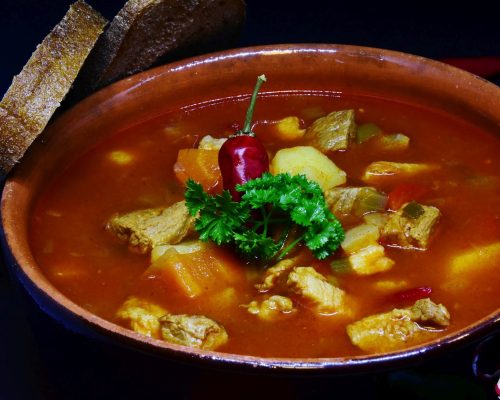
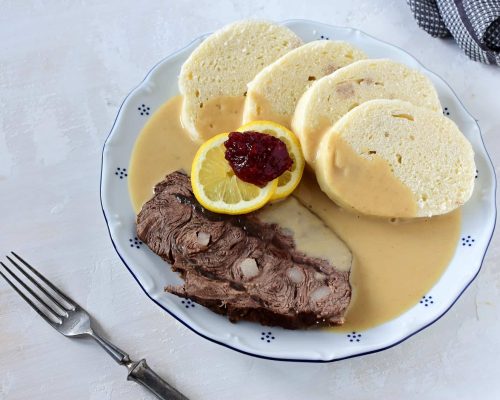

Prague Cuisine
Prague is a city that offers a wide range of culinary experiences. From traditional dishes to street food and fine dining, you will find something to suit your taste buds.
Traditional Dishes
The Czech Republic has a rich culinary heritage; Prague is no exception. Here are some traditional dishes you must try during your visit:
- Guláš: This is a hearty beef stew usually served with bread dumplings. It is a popular dish during the winter months.
- Svíčková: This beef sirloin dish has a creamy vegetable sauce, bread dumplings, and cranberry sauce. It is a signature dish of Czech cuisine.
- Knedlíky: These are dumplings made from flour, bread crumbs, and eggs. They are usually served with meat dishes.
- Koláče: These are sweet pastries filled with fruit, poppy seeds, or cheese. They are a popular snack in Prague.
Street Food
Prague has a vibrant street food scene, and you will find plenty of options. Here are some famous street food items:
- Trdelník: This sweet pastry is made from rolled dough, sugar, and cinnamon. It is usually cooked over an open flame and served hot.
- Chlebíčky: These are open-faced sandwiches usually topped with meat, cheese, and vegetables. They are a popular snack in Prague.
- Langos: This deep-fried dough is usually topped with garlic, cheese, and sour cream. It is a popular street food item in Prague.
Fine Dining
The city has plenty of options if you are looking for a fine dining experience. Here are some of the top restaurants in the city:
- La Degustation: This is a Michelin-starred restaurant that serves modern Czech cuisine.
- Alcron: This restaurant serves international cuisine with a focus on seafood.
- Field: This is a restaurant that serves seasonal cuisine using local ingredients.
Prague has a diverse culinary scene catering to all tastes and budgets. Whether looking for traditional dishes, street food, or fine dining, you will find something to suit your palate.
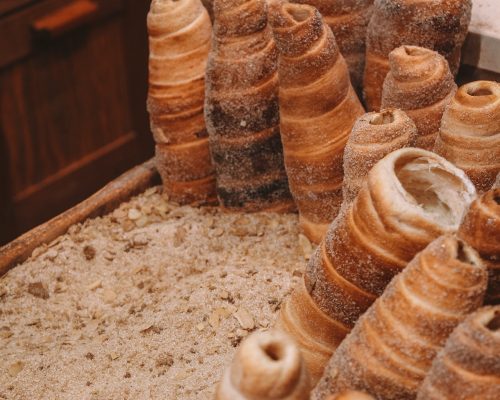
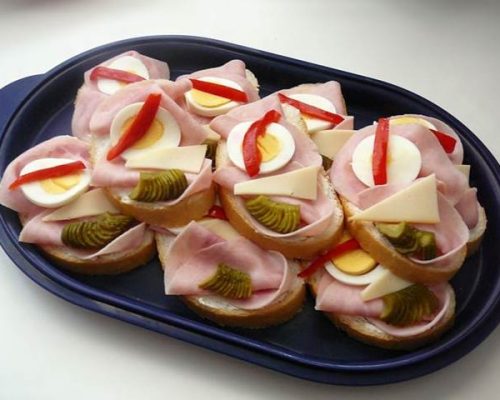

Sightseeing
Prague has a rich history and culture, and there are plenty of sights to see for visitors. Whether you are interested in historical sites, museums, or parks and gardens, there is something for everyone in Prague.
Historical Sites
It is home to many historical sites that are worth visiting. One of the most popular is Prague Castle, the official residence of the Czech Republic’s President. The castle dates back to the 9th century and is one of the largest castles in the world. Another famous historical site is the Old Town Square, home to many beautiful buildings and monuments, including the Astronomical Clock.
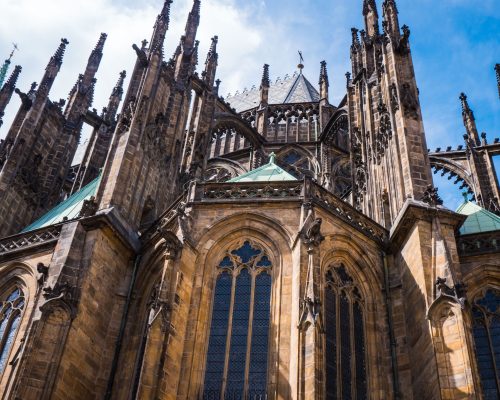
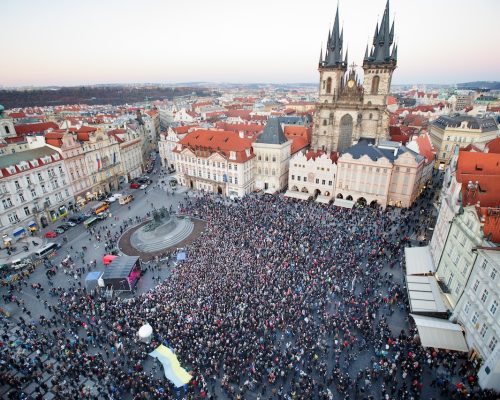
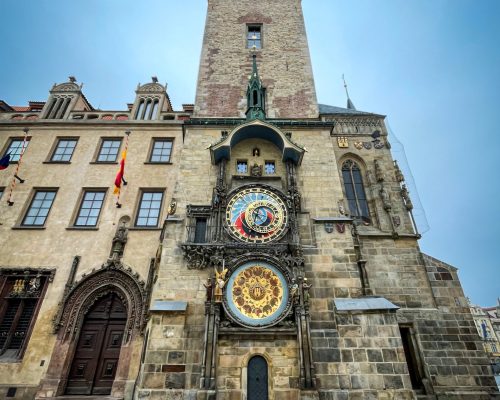
Museums
If you want to learn more about Prague’s history and culture, there are plenty of museums to visit. The National Museum is one of the most popular, with exhibits on natural history, art, and archaeology. The Jewish Museum is also worth a visit, with presentations on Jewish history and culture in the city.
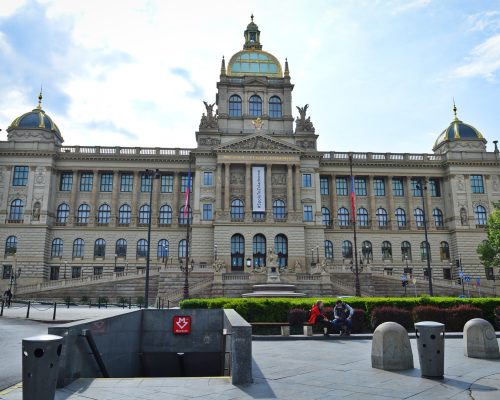
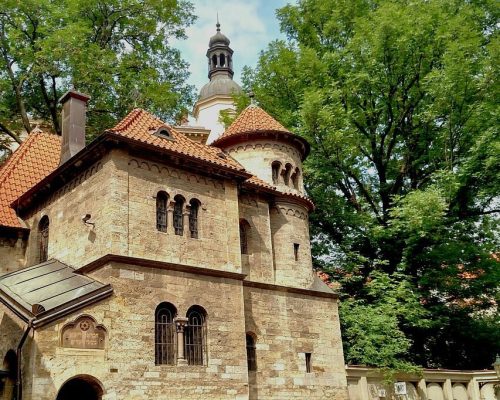
Parks and Gardens
Prague is home to many beautiful parks and gardens, which are perfect for a relaxing afternoon. The most popular is the Botanical Garden, which has over 20,000 plant species worldwide. Another popular park is Petrin Hill, which offers stunning city views and is home to a replica of the Eiffel Tower.
Overall, it has plenty of sights to see and things to do. Whether interested in history, culture, or nature, this beautiful city has something for everyone.
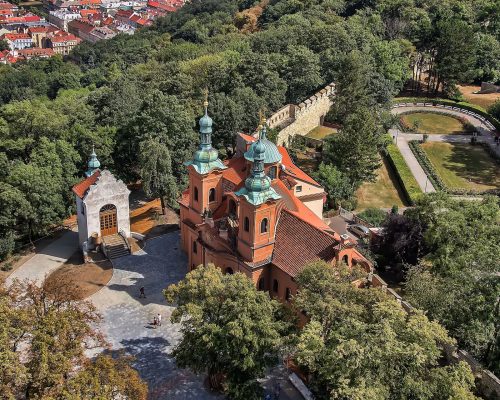
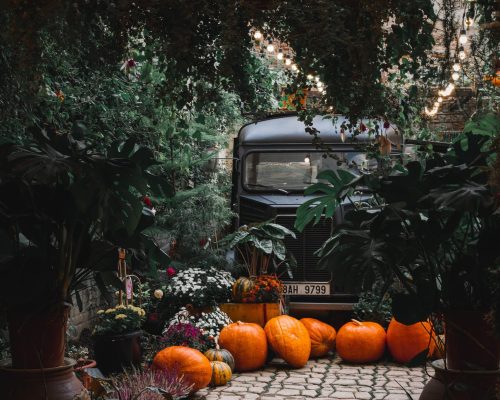
Shopping
Prague is an excellent destination for shopping enthusiasts. The city has something for everyone, from high-end designer stores to local markets. Here are some of the best places to shop in Prague:
Malls
It has several large malls offering a wide range of shopping options. Here are some of the best malls in the city:
Palladium Náměstí Republiky Prague’s most significant and best-known shopping center, with over 200 stores, restaurants, and cafes.
Arkády Pankrác Na Pankráci A modern mall with over 150 shops, including fashion, electronics, and home goods.
Chodov Roztyly is One of the largest malls in Europe, with over 300 stores, a cinema, and a bowling alley.
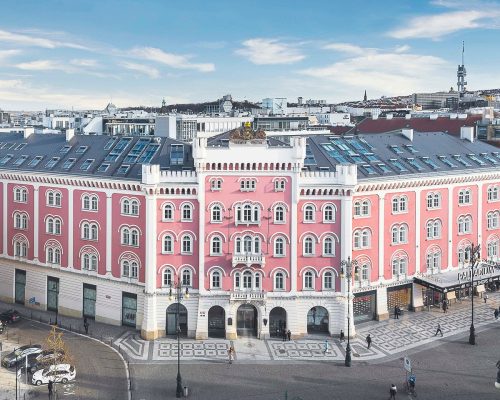
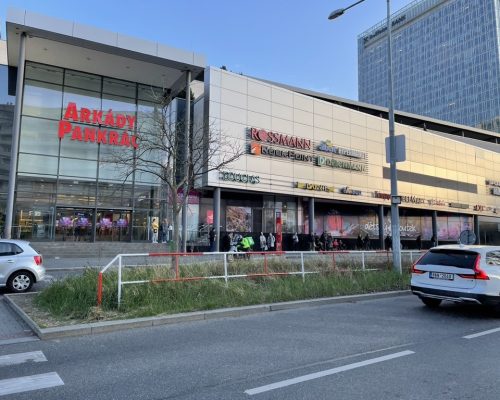
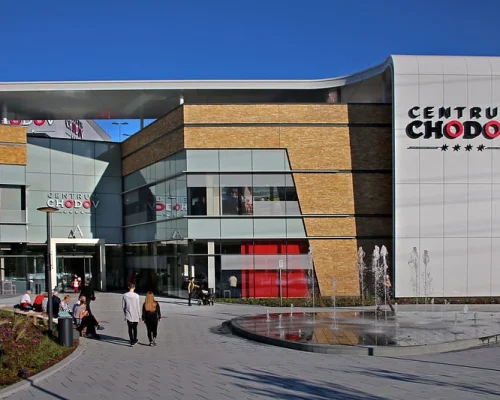
Local Markets
It is also known for its vibrant local markets, where you can find unique souvenirs, handmade crafts, and local food products. Here are some of the best markets in the city:
- Havel Market (Havelské tržiště): A traditional market in the heart of Prague, with over 120 stalls selling fresh produce, flowers, and souvenirs.
- Christmas Markets: Held in the Old Town Square and Wenceslas Square during the holiday season, these markets offer handmade crafts, Christmas decorations, and traditional Czech food and drinks.
- Naplavka Farmers Market: A popular weekend market along the Vltava River, with local farmers selling fresh fruits, vegetables, and other products.
When shopping in Prague, bring cash, as some smaller stores and markets may not accept credit cards. Also, remember that bargaining is not common in Czech culture, so the prices you see are usually f
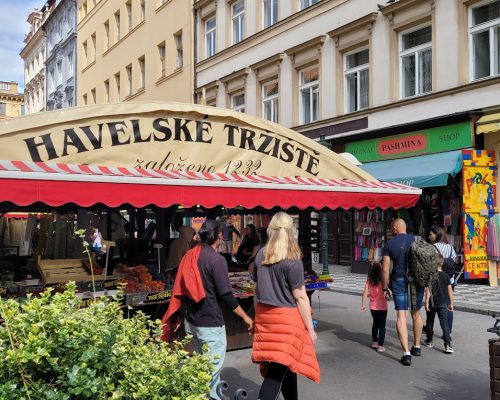
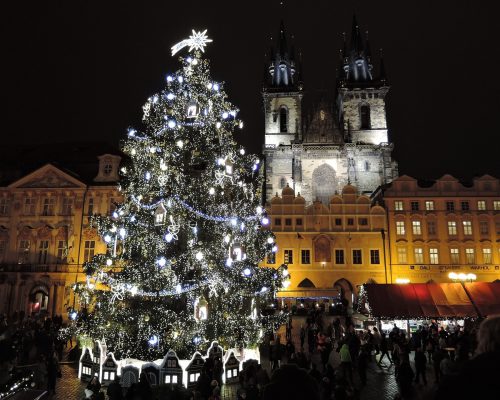
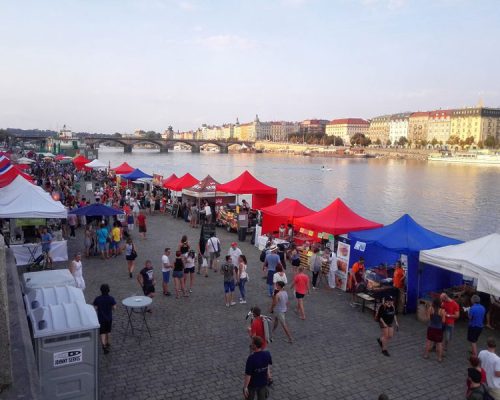
Nightlife
Prague is the perfect destination if you’re looking for a vibrant and exciting nightlife scene. With an eclectic mix of bars, clubs, and live music venues, there is something for everyone to enjoy.
Clubs
Prague is known for its world-class nightlife, and its clubs are no exception. Plenty of clubs exist, whether you’re into electronic music, hip-hop, or pop. Some of the most popular clubs in Prague include:
- Karlovy Lázně: This five-story club is one of the largest in Central Europe, with each floor playing a different genre of music.
- Roxy: A legendary club that has been around for over 25 years, Roxy is known for its alternative and indie music scene.
- Cross Club: A unique club that combines industrial design with electronic music, Cross Club is a must-visit for techno and house music fans.
Pubs
If you’re looking for a more laid-back atmosphere, Prague’s pubs are the perfect place to unwind with a cold beer. There is a pub for every taste, from traditional Czech pubs to trendy gastropubs. Some of the best pubs include:
- U Zlatého Tygra: A traditional Czech pub that has been around since 1713, U Zlatého Tygra is a favorite among locals and tourists.
- Lokál: With several locations throughout the city, Lokál is known for its fresh, locally brewed Pilsner Urquell beer and classic Czech dishes.
- Vinohradský Pivovar: A microbrewery and pub in the Vinohrady neighborhood, Vinohradský Pivovar offers a wide selection of craft beers and delicious pub fare.
Live Music Venues
Prague’s live music venues are to be noticed if you love music. From jazz clubs to concert halls, there are plenty of options for live music in the city. Some of the best live music venues in Prague include:
- Jazz Dock: A famous jazz club located on the banks of the Vltava River, Jazz Dock hosts local and international jazz musicians.
- Lucerna Music Bar: A historic concert hall that has hosted legendary musicians like David Bowie and Iggy Pop, Lucerna Music Bar is still a popular venue for live music today.
- Palác Akropolis: A multi-purpose cultural center that hosts concerts, theater performances, and more, Palác Akropolis is a must-visit for anyone interested in Prague’s alternative arts scene.
No matter what your nightlife preferences are, Prague has something to offer. With a diverse mix of clubs, pubs, and live music venues, you will find something that suits your style.
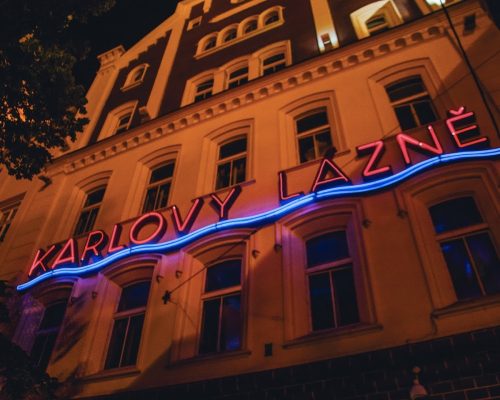
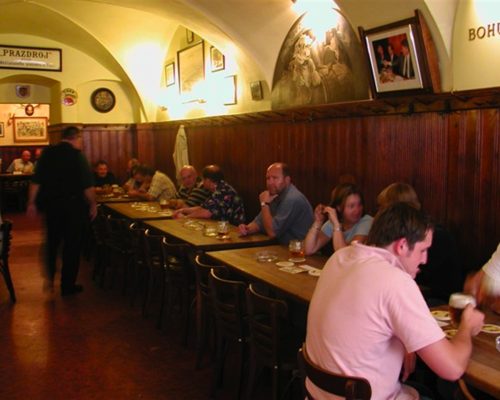
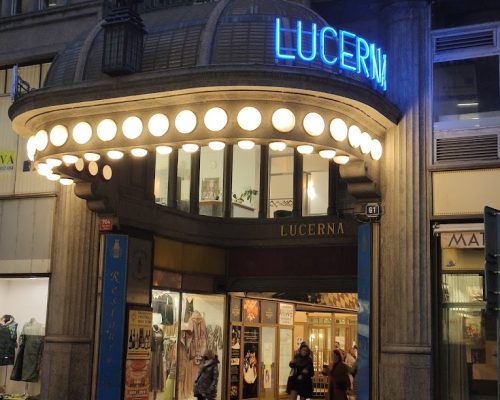
Safety in Prague
Regarding travel destinations, Prague is considered one of the safest cities in Europe. The Czech Republic is known for its low crime rates, and Prague has low violent crime rates. That being said, taking precautions to ensure your safety while traveling is always essential.
General Safety Tips
Here are some general safety tips to keep in mind while visiting Prague:
- Be aware of pickpocketing and petty theft, especially in tourist areas and on public transportation.
- Keep your valuables secure and out of sight.
- Avoid carrying large amounts of cash with you. Instead, use credit cards or withdraw small amounts from ATMs as needed.
- Be cautious when crossing the street, as drivers in Prague can be aggressive.
- Stay alert and aware of your surroundings, especially at night.
Transportation Safety
Prague has an efficient public transportation system, but it’s important to keep safety in mind when using it:
- Be aware of your surroundings when using public transportation, especially at night.
- Keep your belongings close to you and in sight.
- If possible, avoid empty subway cars and buses.
- Be cautious when using taxis, as some drivers may overcharge tourists. Stick to official taxi companies or use ride-sharing services like Uber or Bolt.
Scams to Avoid
Like any popular tourist destination, there are scams to be aware of in Prague. Here are a few common ones:
- The “broken camera” scam: Someone will ask you to take a photo of them with their camera but then claim that you broke it and demand money for repairs.
- The “fake police” scam: Someone will approach you claiming to be a police officer and ask to see your passport and wallet. They may even ask you to withdraw money from an ATM. Genuine police officers in Prague will always be in uniform and show you their badge.
- The “currency exchange” scam: Be cautious when exchanging money, especially on the street. Some exchange offices may offer rates too reasonable to be accurate but then charge high fees or give you counterfeit money.
By following these safety tips and being aware of common scams, you can enjoy your visit to Prague without any issues.
Best Time to Visit Prague
Prague is a beautiful city with a rich history and culture that attracts visitors worldwide. However, the best time to visit Prague depends on your preferences and what you are looking for in your trip. Here are some factors to consider when deciding when to visit Prague.
Weather
Prague has a temperate climate with four distinct seasons. The summers are warm, while the winters can be cold and snowy. The best time to visit Prague in terms of weather is spring (April and May) and fall (September and October). The weather is mild and pleasant during these months, making it perfect for sightseeing and outdoor activities. However, a jacket and umbrella are always a good idea, as the weather can be unpredictable.
Crowds
Prague is a popular tourist destination, and the crowds can be overwhelming during peak season. If you want to avoid the public, visiting Prague during the shoulder seasons of spring and fall is best. During these months, the crowds are smaller, and you can enjoy the city’s attractions without feeling rushed or crowded.
Festivals and Events
Prague hosts several festivals and events throughout the year. If you want to experience them, you should plan your trip accordingly. The Prague Spring International Music Festival occurs in May and June, while the Prague Fringe Festival occurs in May and June. The Prague Christmas Markets are also a popular attraction during the holiday season.
Other Considerations
If you are on a budget, visiting Prague during the low season (November to March) is best when the prices for accommodation and flights are lower. However, remember that some attractions may be closed during this time. Additionally, you are interested in outdoor activities like hiking or cycling. In that case, it’s best to visit Prague in spring and fall when the weather is mild.
In conclusion, the best time to visit Prague depends on your preferences and what you are looking for in your trip. Consider the weather, crowds, festivals, and other factors when planning your trip to Prague.
Conclusion
Visiting Prague is an unforgettable experience that combines history, culture, and stunning architecture. By understanding the currency, language, transportation, must-see attractions, local cuisine, and safety tips, you can make the most of your trip to this enchanting city.
One of the best things about Prague is that it is a relatively small city, so you can easily explore it on foot. However, if you prefer public transportation, the city has an extensive network of trams, buses, and metro lines that can take you anywhere you want to go.
While in Prague, visit the largest castle complex in the world, Prague Castle. This historic castle complex symbolizes power and has been a significant landmark of the city for centuries. Other must-see attractions include the Charles Bridge, Old Town Square, and the Jewish Quarter.
Prague is also known for its delicious local cuisine, including traditional dishes such as goulash, roast pork, and dumplings. Remember to try the famous Czech beer, some of the best in the world.
Finally, as with any travel destination, taking safety precautions is essential. Prague is generally safe, but pickpocketing can be problematic in crowded areas. Keep your valuables close and be aware of your surroundings.
Overall, Prague is a city that offers something for everyone. Whether you’re interested in history and culture or want to explore a beautiful European city, Prague is a must-visit destination.
Frequently Asked Questions
What is the best time to visit Prague?
Prague is a beautiful city to visit year-round. Still, the best time to visit is spring (March to May) and fall (September to November) when the weather is mild and the crowds are fewer. The summer months (June to August) are the busiest and most expensive, while the winter (December to February) can be cold and snowy.
How many days should I spend in Prague?
To fully experience Prague, spending at least three to four days in the city is recommended. This will give you enough time to explore the top attractions, enjoy the local culture, and enjoy the delicious food and drink.
What are the top attractions to see in Prague?
Prague has many beautiful attractions, including the Charles Bridge, Prague Castle, Old Town Square, and the St. Vitus Cathedral. Other must-see sights include the Jewish Quarter, Petrin Hill, and the National Museum.
Are there any travel restrictions for visiting Prague?
As of August 2023, there are no travel restrictions for visiting Prague. However, it is always best to check with your local embassy or consulate for any updates or changes to travel restrictions.
Can I get by with just English in Prague?
Yes, you can get by with just English in Prague. Most locals speak English, and many signs and menus are also in English. However, learning a few basic phrases in Czech is always appreciated, such as hello (dobrý den) and thank you (děkuji).
What is the recommended itinerary for a 3-day trip to Prague?
Day 1: Start with a walking tour of Old Town Square and the Jewish Quarter, followed by a visit to the Charles Bridge and the St. Vitus Cathedral.
Day 2: Explore the Prague Castle complex and the Petrin Hill, then visit the National Museum.
Day 3: Visit the Lesser Town and the Kampa Island, followed by a relaxing afternoon at a local beer garden or café.
Helpful Travel Planning Tips
Flights:
Search and book with KAYAK. They search across 100s of travel sites to compare prices. If you are not ready to book? Set alerts for when prices drop.
Accommodations:
To book a hotel, check Hotels.com
Check here for Hostels
Travel Insurance:
I recommend getting travel insurance from Travelex Insurance to protect your purchase as soon as you book.
Activities:
For tickets, tours, and day trips, check with GetYourGuide.
Restaurants:
Disclosure: Please note that some links on this website are affiliate links. At no cost to you, I receive a commission if you make a purchase. I only recommend companies that I research and would use.
